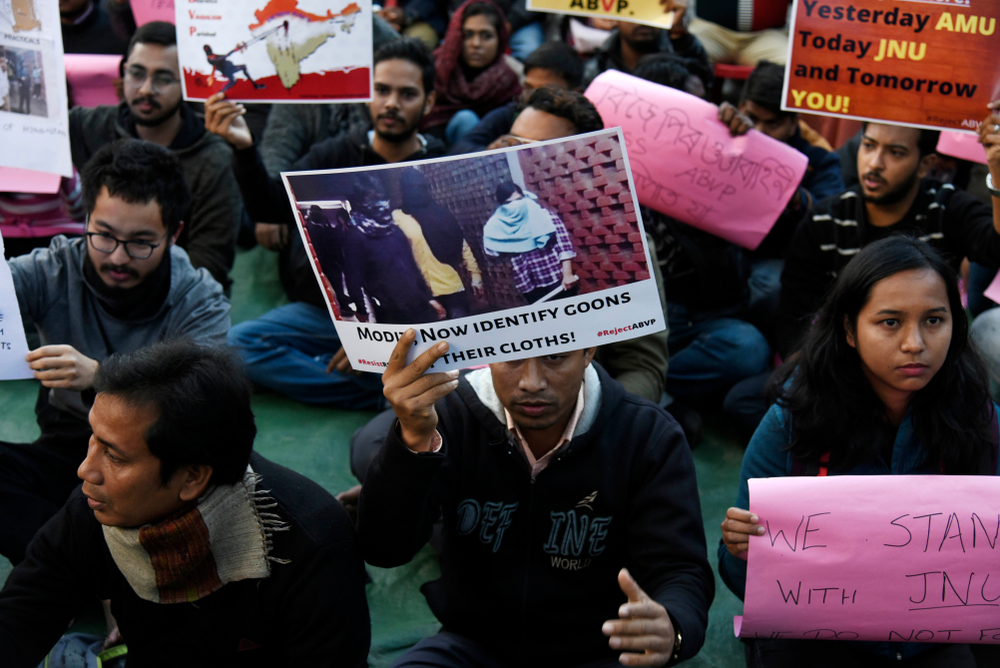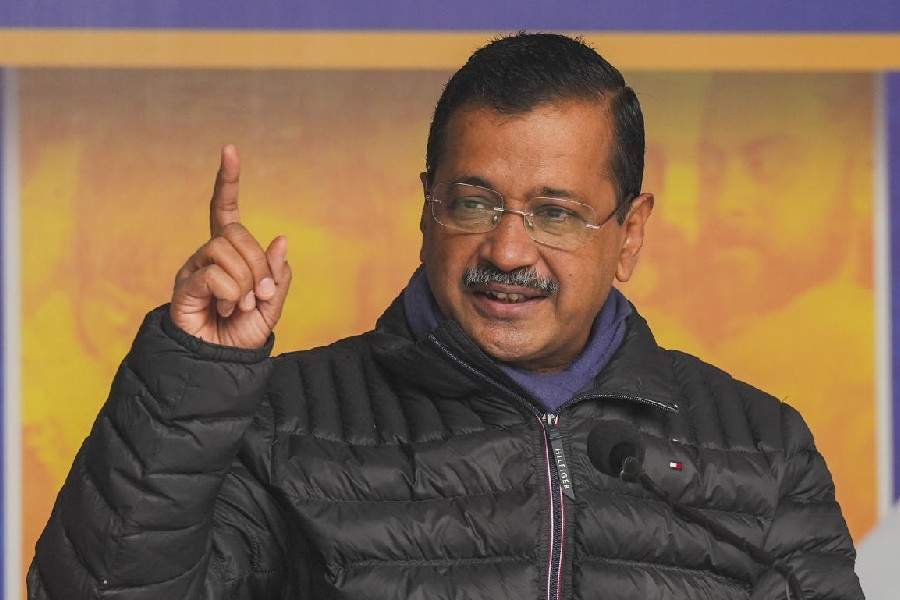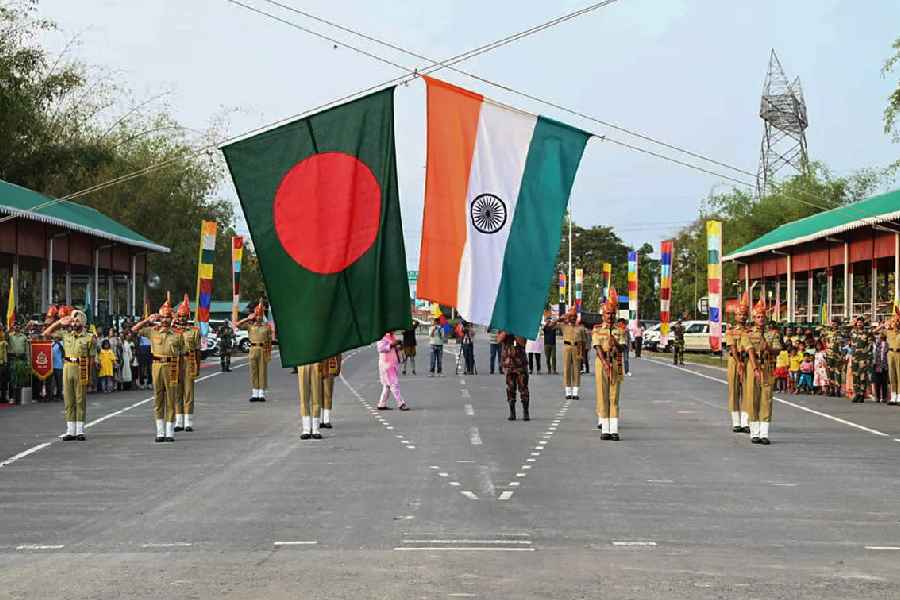“Vanish!” Like the shiny coin from the hands of the baddie trying to allure little Mukul in Satyajit Ray’s film, Sonar Kella, the tukde tukde gang, a terrible internal threat to the unity and peace of India according to the home minister and the prime minister, has vanished. Overnight. At the flick of a wrist, like the coin. Or rather, the flick of a set of queries made under the Right to Information Act. This is powerful magic. They were here, there and everywhere a moment ago: those Left-inclined students in Jawaharlal Nehru University from February 2016 onwards, the Congress who are misleading protesting crowds — oops, is that a contradiction? Never mind — with those teachers, journalists, poets and other writers who work for and speak up for Dalits and the poor, all the young people from educational institutions upholding the Constitution, freedom, equality and a secular polity — what cheek — all of whom definitely want to break up the nation.
First used in 2016 as a marker for those students in JNU who allegedly raised slogans about breaking up India — allegations that were never established — the phrase caught on and gradually widened in scope, including in it anyone who criticized the Bharatiya Janata Party, its government, its leaders, or its policies. In other words, dissenters want to break up or divide India, only the Narendra Modi-led BJP knows how to keep India whole. The dissenters form a ‘gang’ which must be taught a lesson; a ‘gang’ conjures up the convenient image of one, all-pervasive, dangerous enemy to be hated and defeated. A hold-all image. The startled response of the home ministry to the RTI query has exposed the tukde tukde gang as a myth, but its power in the minds of the BJP’s followers should not be underestimated. It gains life from hatred, but hatred of a particular kind. Not all hatreds are the same.
The BJP’s myths are never simple. (Crudeness is not the same as simplicity.) Although the party, its parent and siblings are all rather snooty about the prosaicness of the scientific attitude and emanate such a dislike of reason that various strange-sounding organizations are inspired to kill off its proponents, Modi’s BJP uses myths with scientific care. In the first place, myths, or contrived sentiments associated with myths, are useful distractions. For the party does not live — and thrive — by myth alone; there may be other activities going on behind the mythical screen. For example, the apparently unstoppable string of murders with cow protection as alibi — sentiments associated with myth — would hardly allow people to look elsewhere, whether they cheered on the killings or condemned them. One would have thought that the BJP had nothing else to think about but the purity of the cow and punishments for those who stored or transported its meat, yet funny how its leaders never ran short of means to persuade opponents to cross the floor whenever needed. That cannot happen without hard work, which we never notice. And the cow story targeted minority communities and Dalits, while funding for cow research flowed towards faithful scholars.
The cow, poor thing, was at least there, but the BJP created the love jihad myth out of nothing. Just like that. Its origin comes closest to that of the tukde tukde gang tale. In love jihad, a somewhat mad conspiracy theory powered by hate was enough for people to pounce on young men and women who ignored the boundaries of community when in love. Once again, the hatred there is not simple: it is directed at the minority community, certainly, but also at women who dare love, at youthful spontaneity, at the sense of freedom and equality, and at love itself.
The myth of the tukde tukde gang is now the BJP’s favourite. That it does not exist is immaterial. It is enough that crowds are protesting throughout the country against the Citizenship (Amendment) Act, the National Population Register and the National Register of Citizens for Narendra Modi and Amit Shah to point to the non-existent tukde tukde gang which is leading them. With a leap that is only possible with the scientifically calculated nurture of unreason, this gang has been accused of speaking the language of Pakistan through its desire to protect infiltrators. It has to be mentioned here that like the cow, Pakistan exists, but has acquired mythic properties through its quasi-magical appearances in BJP rhetoric; it is also a running theme in most myths.
But the tukde tukde gang is especially important, because its name embodies one of the BJP’s most effective strategies: reversal of reality. This is so symmetrically done here that it is almost witty. The party and its cohorts are accused of trying to divide the country on the lines of community and even of caste — they cannot help it, now they are talking of schools for Dalits in the guise of helpfulness — hence the charge of divisiveness is neatly transferred on to an imagined enemy who must always be taught a lesson. This again is a scientifically nurtured ability. For example, the most important representatives of the government are constantly repeating in ringing tones of reassurance that the CAA will not deprive a single Muslim of citizenship. But who said it would? That does not matter; authoritative repetition may confuse the issue.
The target in the tukde tukde gang myth, however, is not a community or caste. Its origins and the people gradually included in its definition lay bare a hatred of learning, of training in reason and the development of the critical faculty, of unfettered enquiry and the confidence that comes from understanding, and the belief, in many cases, in social action. These are people who can talk back to power, who can reason and argue eloquently enough to influence others, who think and question, and who often engage in the work of
empowering those whom the government would rather ignore or suppress. They are a serious hindrance in the creation of a bubble of unshakeable, awed loyalty enveloped by myths — Ram’s birthplace is, after all, the BJP’s seminal USP — and false history aimed at cornering specific segments of the population.
But beyond the obvious reasons, there lies a deeper, more abiding, cause — envy of the intellect. This has almost primal force: no abstract political need or compliance could have fired the ruthless violence of the attacks on students by policemen and BJP faithfuls in educational institutions one after the other. This is, when seen on this scale, a different class war, one in which the word ‘elite’ in the sense of wealth or status is completely misapplied. It is also the expression of a hatred that cannot be otherwise articulated. As I said, all hatreds are not the same.
Would there have been less of this violence had governments in India, all of them, achieved some kind of equality in education? Would political parties that reign with an iron hand with anti-intellectualism as spur then be less influential? The answer would call for a new myth, I think.











